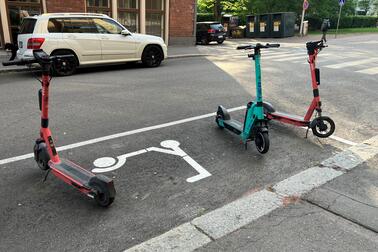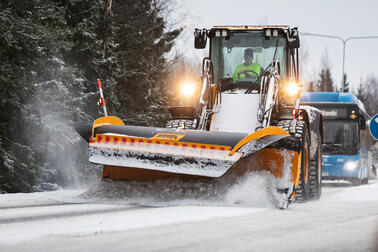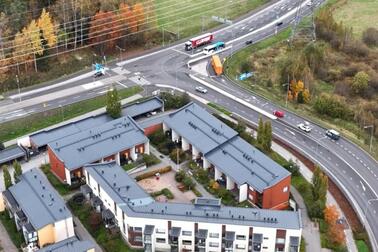
The Rescue Department’s response time is monitored more closely in Kruununhaka and Katajanokka in central Helsinki. The aim is to get as good of an understanding as possible of how construction sites in the city centre and the expansion of the pedestrian area impact the response times. The closer monitoring began in June 2023, at the same time as the experiments on Esplanadi started. The monitoring continues until further notice even after the Esplanadi experiment ends. Monitoring is carried out for urgent emergency operations at Kallio and Erottaja rescue stations.
The monitoring has revealed that Erottaja and Kallio rescue units’ response times to Kruununhaka and Katajanokka have clearly risen. Between 2017 and 2019, the median time of Erottaja rescue unit’s urgent missions was 5:13. In 2023, the median time was 5:57. For the Kallio rescue unit, the median time between 2017 and 2019 was 5:38, and 6:53 in 2023.
“The increase is significant, and the direction is worrisome. For the Erottaja rescue station, the experiments related to the expansion of the pedestrian city centre have had a clear impact on emergency drive times. In terms of the Kallio rescue station, the large construction sites around Sörnäisten rantatie are particularly challenging. This development direction is particularly concerning in the current situation in which we are also investing on improving our response times as obligated by a conditional fine from the Southern Finland Regional State Administrative Agency. Among other things, these investments include building new rescue stations and increasing the number of employees,” says Rescue Commander Jani Pitkänen from Helsinki.
Rescue operations’ response time refers to a time that starts when the first unit receives the alarm and ends when it reaches the place of accident.
New traffic light priorities
Shortening response times is an important goal for Helsinki. Measures have already been taken to improve the situation and the safety of residents.
“We have already deployed a system at the Erottaja rescue station that forces traffic lights to turn green for the units starting an emergency drive. The aim is to shorten response times by emptying traffic from the streets before the emergency vehicle arrives. In addition to shortening travel time, this reduces the risk of an accident as emergency vehicles do not need to drive through a red light,” explains Director of Traffic and Street Planning Reetta Putkonen.
Push buttons were installed at the Erottaja rescue station in January. Pushing the button starts the priority treatment on the selected route. The staff starting the emergency drive orders the priority treatment at the rescue station before they start driving. The priority starts approximately 20 seconds from pushing the button and keeps the traffic lights green on the selected route for a preset amount of time, which is a few minutes. The priority treatment for traffic lights has been implemented for the routes Ludviginkatu-Erottajankatu-Mannerheimintie and Korkeavuorenkatu-Eteläesplanadi-Eteläranta. The route is chosen on the basis of which direction the rescue mission is at. The other traffic on the route has time to clear out before the emergency vehicle arrives from the station to the street. The system is meant to become permanent.
“We are closely monitoring the functioning of the system. We are able to adjust the operation of the system in accordance with wishes we receive from the Rescue Department,” says Putkonen.
Traffic arrangements in the city centre
Traffic arrangements are also carried out in the city centre to improve the situation. The Urban Environment Division, Rescue Department and police organised a joint field visit to come up with solutions for the challenging Ludviginkatu on which loading activities disturb emergency vehicles. The purpose is to plan and implement changes to parking and loading activities on Ludviginkatu in spring 2024.
“From our perspective, it is important that corrective measures have been taken. We must make it to destinations in the city centre in six minutes, and generally elsewhere too, in more than half of the urgent missions. We are closely monitoring the impact of the agreed measures during and after the experiment on Esplanadi. This provides us with valuable information about the impact of the number of lanes, large street construction sites and traffic light priorities for the smoothness of emergency driving. We can utilise the information we receive also in the further planning of other areas in collaboration with the Urban Environment Division,” says Jani Pitkänen.


